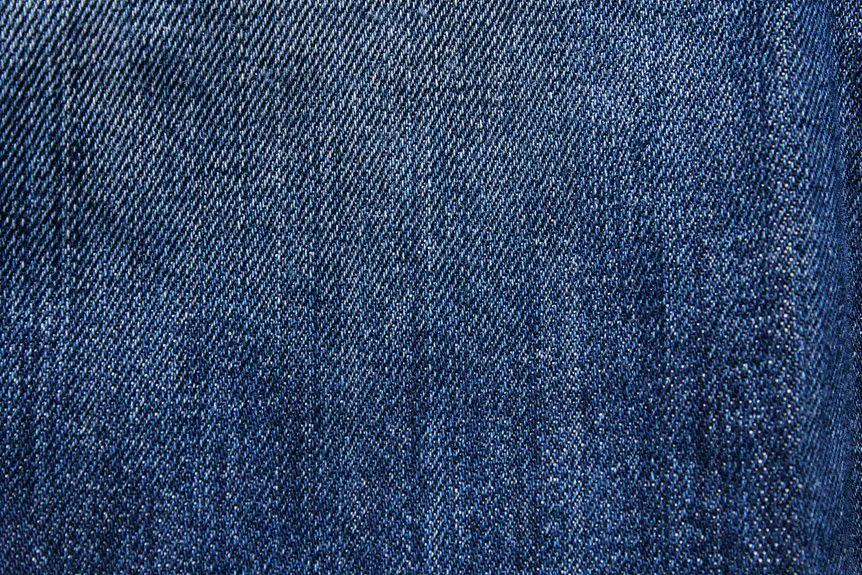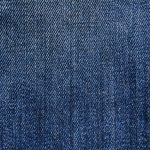Scuba style fabric is a smooth, stretchy material made from polyester and spandex, giving you a soft yet structured feel. It’s inspired by neoprene, the material used in wetsuits, but thinner and more flexible for fashion. You’ll find it in dresses, activewear, and jackets because it hugs your shape, resists wrinkles, and stays comfortable. If you want to explore how it’s made, used, and cared for, keep going to discover more of its qualities and benefits.
Table of Contents
Key Takeaways
- Scuba fabric is a polyester and spandex blend with a smooth, slightly spongy texture and double-knit construction.
- It is inspired by neoprene but is thinner, softer, more flexible, and suitable for fashion use.
- The fabric holds its shape well, resists wrinkles, and offers moderate stretch and durability.
- Commonly used in dresses, skirts, activewear, and outerwear for a structured, figure-flattering silhouette.
- Scuba fabric is moisture-resistant, breathable, and easy to care for with gentle washing and air drying.
Definition and Characteristics of Scuba Fabric
Although you might associate scuba fabric with diving gear, it’s actually a versatile and stylish material used in fashion and upholstery.
Scuba fabric goes beyond diving gear, offering versatile style for fashion and upholstery projects alike.
When you touch scuba fabric, you’ll notice its smooth, slightly spongy texture, thanks to its unique double-knit construction. This fabric is typically made from a blend of polyester and spandex, making it stretchy yet structured.
It holds its shape well, giving garments a clean, modern silhouette that resists wrinkles. You’ll also appreciate its thickness, which offers durability and a soft drape without being heavy.
Plus, scuba fabric is moisture-resistant and breathable, so it feels comfortable against your skin.
Whether you’re crafting a sleek dress or upholstering furniture, this fabric’s blend of flexibility and firmness makes it a smart choice.
The History and Origin of Scuba Fabric
While scuba fabric might seem like a modern invention, its roots trace back to the evolution of neoprene used in diving suits during the mid-20th century. Neoprene was originally developed to provide insulation and flexibility for divers, protecting them from cold water.
Over time, manufacturers adapted neoprene’s unique properties into a thinner, stretchier material suitable for fashion and upholstery, which we now call scuba fabric. You’ll find that this fabric retains neoprene’s smooth texture and durability but offers more comfort and versatility.
As you explore scuba fabric today, you’re experiencing a material born from practical innovation, now transformed into a stylish, functional textile. Understanding this history helps you appreciate how scuba fabric blends performance with contemporary fashion.
How Scuba Fabric Is Manufactured
Building on its origins from neoprene, scuba fabric‘s unique feel and performance come from a specialized manufacturing process.
You’ll find that scuba fabric is made by laminating two layers of knit fabric with a smooth, dense foam core in between. This foam core gives scuba fabric its signature thickness and flexibility without adding weight. The layers are bonded using heat and pressure, ensuring durability and stretch.
Unlike regular neoprene, the foam in scuba fabric is more finely textured, creating a softer hand feel and better drape. You’ll notice the knit fabric’s smooth surface on both sides, which makes scuba ideal for fashion garments.
This careful layering and bonding process results in a fabric that’s structured yet comfortable, perfect for modern apparel.
Differences Between Scuba and Neoprene
You’ll notice that scuba and neoprene fabrics differ mainly in their material composition and texture.
Scuba tends to be softer and more flexible, while neoprene is thicker and sturdier.
Understanding these differences helps you choose the right fabric for your project.
Material Composition Differences
Because scuba and neoprene share similar origins as synthetic fabrics, you might assume they’re identical, but their material compositions actually differ in key ways that affect performance and feel. Scuba fabric is typically made from a blend of polyester and spandex, which gives it stretch and durability. Neoprene, on the other hand, is a synthetic rubber primarily made from chloroprene, offering superior insulation and water resistance. These variations influence how each fabric behaves in different uses, especially in fashion versus aquatic applications.
| Feature | Scuba Fabric | Neoprene |
|---|---|---|
| Base Material | Polyester & Spandex blend | Synthetic rubber (Chloroprene) |
| Stretch Level | Moderate | High |
| Water Resistance | Low to Moderate | High |
Texture and Flexibility Variations
Although scuba and neoprene might look similar at a glance, their textures and flexibility differ considerably, affecting how they feel and perform.
When you touch scuba fabric, you’ll notice it’s smoother and more polished, with a slight sheen that gives it a sleek appearance.
Neoprene, on the other hand, has a denser, spongier feel, often with a matte finish. This difference influences flexibility: scuba fabric is less stretchy and holds its shape better, making it ideal for structured garments.
Neoprene offers more stretch and cushioning, which is why it’s favored for wetsuits and athletic gear.
Common Uses of Scuba Fabric in Fashion
You’ll find scuba fabric in trendy dresses and skirts that hold their shape beautifully.
It’s also popular in activewear and athleisure for its stretch and comfort.
Plus, outerwear and jackets made from scuba offer a sleek, structured look that stands out.
Trendy Dresses and Skirts
When you choose scuba fabric for dresses and skirts, you get a perfect blend of structure and stretch that enhances your silhouette. This fabric holds its shape well, so your outfit looks polished without feeling stiff.
You’ll love how scuba fabric smooths over curves while allowing enough flexibility for comfort. It also resists wrinkles, meaning your dress or skirt stays fresh all day long.
Whether you pick a sleek bodycon dress or a flared skirt, scuba fabric adds modern appeal with clean lines and a slight sheen. Plus, it’s thick enough to keep you comfortable in cooler weather but breathable enough for warmer days.
If you want a trendy, figure-flattering look that moves with you, scuba fabric is a smart choice for stylish dresses and skirts.
Activewear and Athleisure
Scuba fabric has become a favorite in activewear and athleisure for its unique combination of stretch, support, and durability. When you wear scuba, you feel confident moving through your workout or running errands. Its smooth texture and structured fit make leggings, tops, and sports bras stand out. Plus, scuba holds its shape and resists wrinkles, so you look fresh all day. Imagine your favorite workout gear that’s both functional and stylish—that’s the power of scuba.
| Comfort | Style | Performance |
|---|---|---|
| Soft touch | Sleek lines | Moisture-wicking |
| Flexible | Bold colors | Breathable |
| Supportive | Modern fit | Long-lasting |
Choosing scuba means you won’t have to sacrifice comfort for fashion.
Outerwear and Jackets
Beyond activewear, scuba fabric suits outerwear and jackets perfectly thanks to its structured yet flexible nature. When you wear a scuba jacket, you’ll notice how it holds its shape while allowing comfortable movement.
Its smooth surface resists wrinkles, keeping your outerwear looking sharp throughout the day. Plus, scuba fabric’s thickness offers warmth without bulk, making it ideal for cooler weather.
You can find sleek blazers, cropped jackets, and even trench coats made from this material, all benefiting from its modern, polished finish. If you want a piece that’s both stylish and functional, scuba outerwear is a smart choice.
It’s easy to layer, dries quickly, and maintains color vibrancy, so your jacket stays fresh and vibrant season after season.
Popular Scuba Fabric Colors and Patterns
Although you might associate scuba fabric primarily with solid hues, it actually comes in a wide range of vibrant colors and eye-catching patterns.
When choosing scuba fabric for your wardrobe, you’ll find options that suit every style and occasion. Here are some popular choices:
- Bold solids like royal blue, emerald green, and fiery red that make a statement.
- Classic neutrals such as black, gray, and navy for timeless versatility.
- Geometric prints that add a modern, edgy touch to your outfit.
- Floral and abstract patterns offering a playful, artistic vibe.
These variations let you experiment with scuba fabric beyond basics, creating looks that stand out or blend seamlessly with your existing closet.
Care and Maintenance Tips for Scuba Garments
Because scuba fabric combines stretch and structure, you’ll want to handle your garments with care to maintain their shape and texture.
Always wash scuba pieces inside out using cold water and a gentle cycle to prevent damage. Avoid bleach and harsh detergents, as they can weaken the fabric.
Skip the dryer; instead, lay your garment flat or hang it to air dry, preserving its elasticity. When ironing, use a low heat setting or place a cloth between the iron and fabric to avoid melting or warping.
Store your scuba garments folded or hanging in a cool, dry place to prevent creases and distortion.
Benefits of Using Scuba Fabric in Design
When you choose scuba fabric for your designs, you get a material that offers both durability and flexibility. This unique blend makes it ideal for a variety of creative projects.
Here are four key benefits you’ll appreciate:
- Shape Retention – Scuba fabric holds its form well, giving your designs a sleek, structured look without sagging.
- Comfort – Its smooth, soft texture feels great against the skin, making your garments comfortable to wear.
- Wrinkle Resistance – You won’t need to worry about constant ironing; scuba fabric resists wrinkles, keeping your creations looking fresh.
- Versatility – Whether for casual wear, formal pieces, or accessories, scuba adapts well to different styles and sewing techniques.
Using scuba fabric helps you create stylish, durable, and comfortable designs with ease.
Where to Buy Quality Scuba Fabric
If you want your projects to shine, you’ll need to find quality scuba fabric from reliable sources.
Start by checking specialty fabric stores, both local and online, as they often carry high-grade scuba fabric with detailed descriptions and customer reviews. Websites like Fabric.com, Mood Fabrics, and Joann Fabrics offer a good selection and convenient shipping options.
You can also explore Etsy for unique prints and small-batch options made by independent sellers.
When buying, pay attention to fabric weight, stretch, and colorfastness to guarantee it suits your design needs. Don’t hesitate to request swatches if available, so you can assess texture and color firsthand.
Frequently Asked Questions
Can Scuba Fabric Be Recycled or Is It Environmentally Harmful?
You can’t easily recycle scuba fabric because it’s a synthetic blend, which makes it environmentally harmful. However, you can reduce impact by choosing brands using recycled materials or repurposing old scuba garments creatively.
Is Scuba Fabric Suitable for Athletic Wear or High-Intensity Activities?
You can wear scuba fabric for athletic activities, but it’s not ideal for high-intensity workouts since it lacks breathability and moisture-wicking. It’s better suited for low-impact or casual athletic wear where style matters more.
How Does Scuba Fabric Perform in Extreme Weather Conditions?
Did you know scuba fabric can retain up to 30% more heat than regular materials? You’ll find it performs well in cold weather but may feel heavy and less breathable during extreme heat or intense activity.
Are There Any Health Concerns Related to Wearing Scuba Fabric?
You shouldn’t worry much about health concerns with scuba fabric unless you have sensitive skin or allergies. Its synthetic fibers might cause irritation or sweating, so wearing breathable layers underneath can help keep you comfortable.
Can Scuba Fabric Be Easily Dyed at Home for Custom Projects?
Imagine painting on a smooth, dense canvas—scuba fabric resists dyes because of its synthetic fibers. You won’t easily achieve vibrant colors at home; professional dyeing or specialized fabric paints work best for custom projects.
- Tetron Fabric for Marine Applications: Durability and Use Cases - June 18, 2025
- Tetron Fabric for Outdoor Furniture: Weather Resistance and Care - June 18, 2025
- Tetron Fabric for Wall Coverings: Style and Application Tips - June 18, 2025







